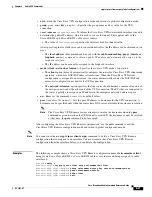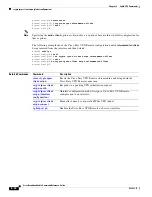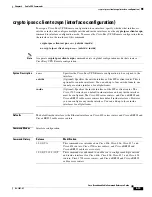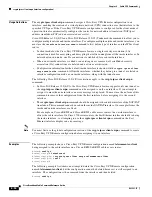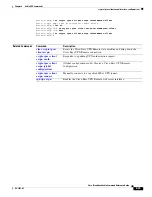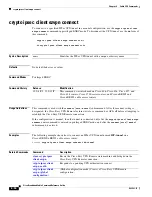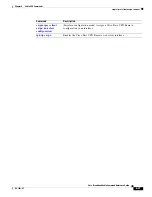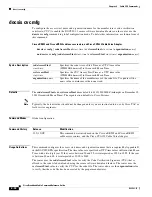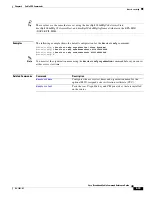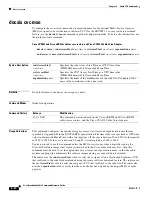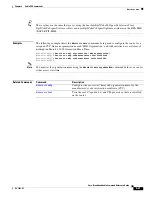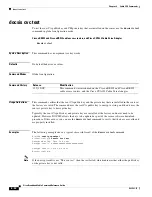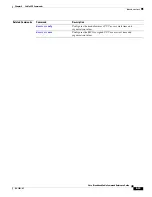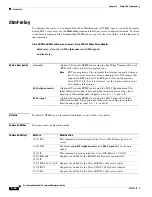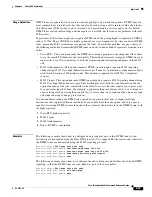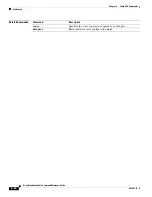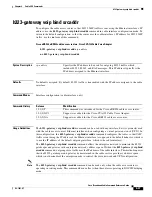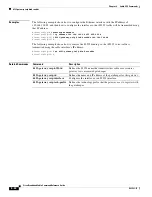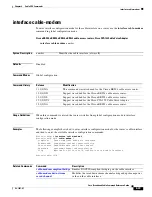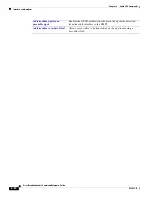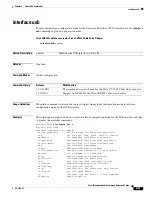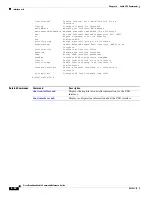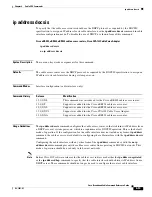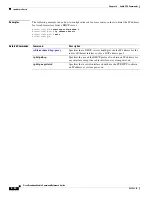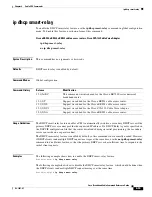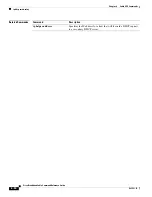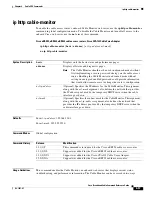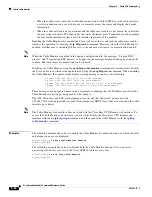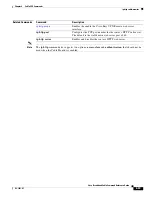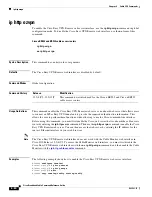
6-45
Cisco Broadband Cable Command Reference Guide
OL-1581-07
Chapter 6 Cable CPE Commands
dtmf-relay
Usage Guidelines
DTMF tones are generated when you press the keypad digits on a touch-tone phone. DTMF tones are
most commonly used to dial calls, but they can also be used during a call to interact with an Interactive
Voice Response (IVR) system, such as voicemail, automated banking services and so on. By default,
DTMF tones are transmitted along with the regular voice traffic, but this can cause problems with some
IVR systems.
In particular, IVR systems might not recognize DTMF tones when using highly compressed CODECs
such as G.729a. These CODECs are highly optimized for voice frequencies, but they can distort DTMF
tones, preventing IVR systems from recognizing the tones. To avoid this problem, use one or more of
the following methods of transmitting DTMF tones in an out-of-band channel, separately from the voice
traffic:
•
Cisco RTP—This option transmits the DTMF tones using a proprietary encoding that allows them
to use the same RTP channel as the voice traffic. This method accurately transports DTMF tones but
requires the use of Cisco gateways at both the originating and terminating endpoints of the H.323
call.
•
H.245 Alphanumeric—This option transmits DTMF tones through a separate H.245 signaling
channel using H.245 User Input Indication messages. Tones are transmitted as alphanumeric digits
with a fixed duration of 500 milliseconds. This method is required for all H.323v2 compliant
systems.
•
H.245 Signal—This option transmits DTMF tones through a separate H.245 signaling channel using
H.245 User Input Indication messages. This method preserves both the tone information and the
original duration of the tone, which allows the caller to use services that require you to press a key
for a particular length of time. For example, a popular calling card feature allows you to break out
of an existing call by pressing the pound (#) key for more than two seconds and then make a second
call without having to hang up in between.
You can enable more than one DTMF relay option for a particular dial peer to support multiple
destinations that might use different methods. If you enable more than one option, and if the peer is
capable of receiving DTMF in more than one of these formats, the router selects the DTMF format with
the highest priority:
1.
Cisco RTP (highest priority)
2.
H.245 Signal
3.
H.245 Alphanumeric
4.
None—DTMF is sent inband
Examples
The following example shows how to configure an outgoing dial peer so that DTMF tones to that
destination are transmitted using the Cisco RTP protocol, if it is supported by the remote end; otherwise,
the DTMF tones are transmitted using the H.245 signaling protocol.
Router(config)#
dial-peer voice 100 voip
Router(config-dial-peer)#
destination-pattern 555-1212
Router(config-dial-peer)#
session target ipv4:192.168.100.110
Router(config-dial-peer)#
dtmf-relay cisco-rtp h245-signal
Router(config-dial-peer)#
exit
The following example shows how to reconfigure the above dial peer and disables out-of-band DTMF
signaling, so that the DTMF tones are sent inband, as part of the voice traffic:
Router(config)#
dial-peer voice 100 voip
Router(config-dial-peer)#
no dtmf-relay
Router(config-dial-peer)#
exit

